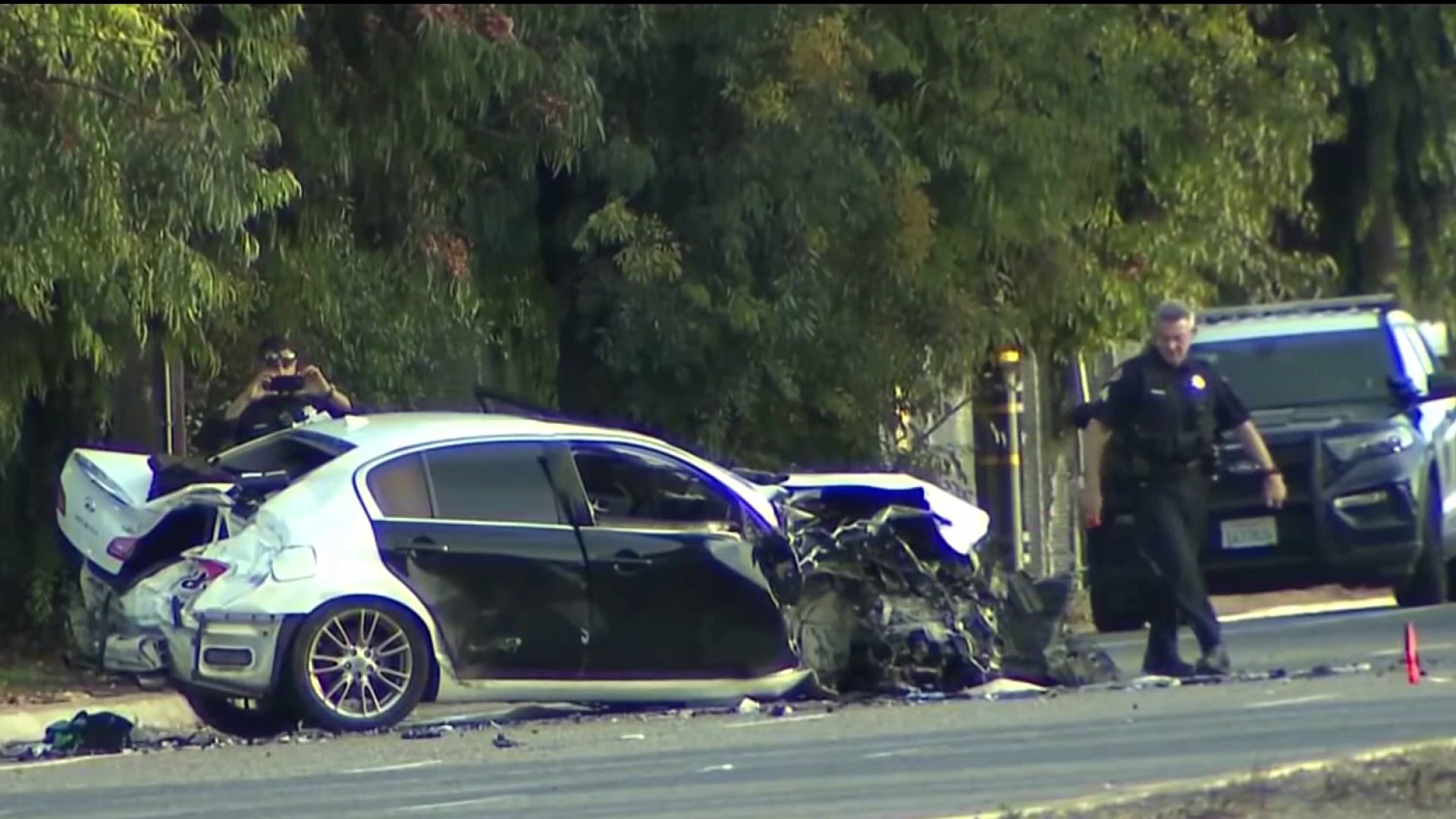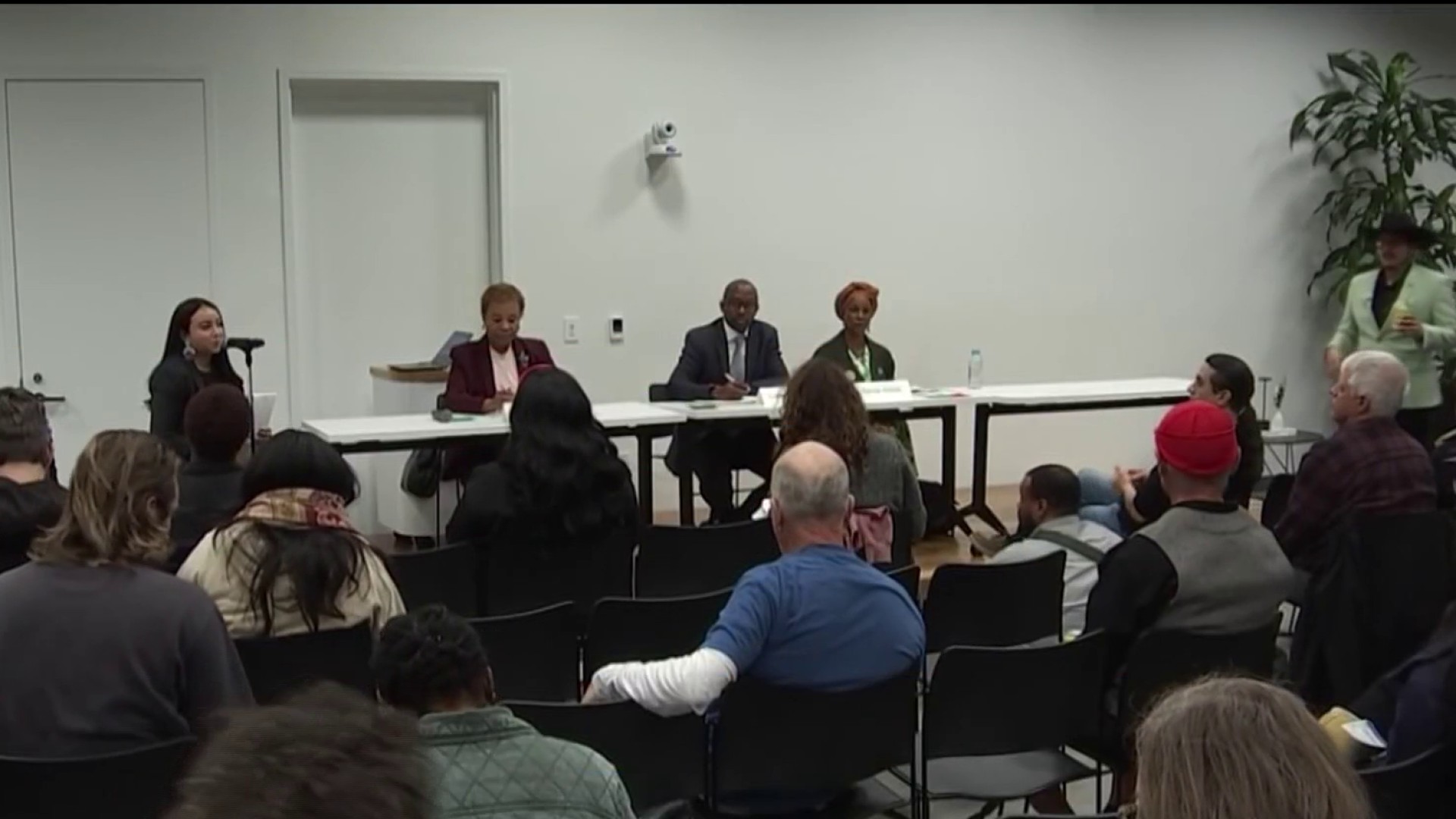A flight simulator provides a cockpit view from a Boeing 777 approaching SFO runway at speeds and altitudes of Asiana Flight 214. Stephen Stock reports.
What did it look like for the cockpit crew of Flight 214 approaching runway 28L at SFO on Saturday morning?
NBC Bay Area got a simulated view of the approach Monday afternoon at the Hiller Aviation Museum in San Carlos.
"This is what it would've looked like on final approach," Museum CEO Jeff Bass told NBC Bay Area, referring to the pilot perspective of the simulator game, as he navigated the virtual plane over the bay and onto the runway.
He ran the simulation several times, attempting to fly at the same altitudes and speeds as the plane, provided by NTSB Spokesman Debra Hersman earlier afternoon after reviewing evidence from the plane's black boxes.
"As we try to recreate it we keep landing short but that’s essentially what happened," Bass said.
The simulated plane crashed a few of those times in the water prior to the runway, others, the program allowed it to land.
"I'm just below 500 feet at 134 knots," Bass said during on simulation. That's exactly where Asiana's Boeing 777 was Saturday morning 34 seconds before crashing. However, instead of maintaining this speed or accelerating to the recommended landing speed of 137 knots, the plane slowed, finally hitting ground at 106 knots.
Local
To simulate the crash, Bass let the knots tick down on the simulator. That time the animated plane landed, but veteran pilot Bob Kibort said, that wouldn't happen in reality.
"Different planes have different speeds you want to shoot for," Kibort told NBC Bay Area. "If you're below that speed you better damn well speed up."
Kibort flew for United Airlines for 27 years and says he's landed at SFO thousands of times. He emphasized the importance of maintaining the recommended landing speed.
"Speed in an airplane is life," Kibort said.
According to NTSB Chairman, the crew did try to pull the throttle and accelerate eight seconds before hitting the ground. Kibort said at that point, it's too late.
"You don’t have instant acceleration of the engines," he said, "it takes time."
A preliminary review of the crash by federal investigators turns up the following:
- APPROACH PROCEEDS NORMALLY ... the plane receives clearance from air traffic control to land without its instrument landing system. Visibility is about 10 miles with winds out of the southwest at 7 knots. There are no distress calls or requests for support in the air traffic control tapes that captured the discussion between a controller and the Asiana crew.
- PLANE DESCENDS ... at 1,600 feet and 82 seconds before impact the autopilot disengages. At 1,400 feet and 73 seconds before impact, the plane's speed is about 196 mph. At 1,000 feet and 54 seconds before impact, the plane slows to about 171 mph. At 500 feet and 34 seconds before impact, the plane is traveling at about 154 mph, and at 200 feet and 16 seconds before impact, the plane is traveling at 136 mph.
- EIGHT SECONDS OUT ... at an altitude of 125 feet, the throttles began moving forward. The plane is traveling at about 129 mph.
- SEVEN SECONDS OUT ... the crew asks to increase its air speed.
- FOUR SECONDS OUT ... the stick shaker, a yolk the pilots hold, begins shaking, indicating the plane could stall.
- THREE SECONDS OUT ... the plane is traveling at 119 mph, the slowest speed recorded by the flight data recorder. That is 39 mph below the approximately 158 mph it should have been going as it crossed the runway. The engines are at 50 percent power and engine power is increasing.
- 1.5 SECONDS OUT ... the crew calls to abort the landing and go around for another try.
- CRASH ... the plane, traveling at 122 mph, hits a seawall. The controller declares an emergency. The pilots talk to air traffic control and emergency vehicles are deployed.
For more NBC Bay Area coverage, view our Flight 214 Crash Landing page.



